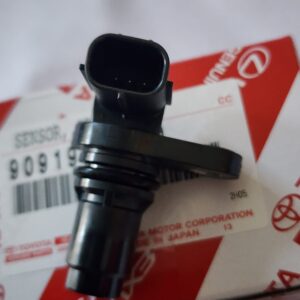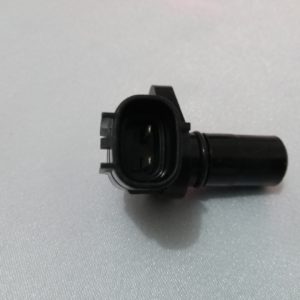Title: Oxygen Sensors: The Unsung Heroes of Engine Efficiency
Introduction:
In the world of automotive engineering, there’s a tiny yet mighty component that silently plays a pivotal role in the performance and efficiency of modern engines – the oxygen sensor. Often overlooked but absolutely essential, these sensors serve as the engine’s eyes and ears, continuously monitoring the air-fuel ratio to ensure optimal combustion and reduce harmful emissions. Join us as we delve into the fascinating realm of oxygen sensors, uncovering their function, importance, and the significant impact they have on our vehicles and the environment.
Understanding Oxygen Sensors:
Oxygen sensors, also known as O2 sensors or lambda sensors, are sophisticated electronic devices positioned in the exhaust system of vehicles. Their primary function is to measure the amount of oxygen in the exhaust gases and provide real-time feedback to the engine control unit (ECU) or powertrain control module (PCM).
How Do Oxygen Sensors Work?
The operation of oxygen sensors revolves around a simple yet ingenious principle. As the engine burns fuel, it produces exhaust gases containing various pollutants, including unburned hydrocarbons, carbon monoxide, and nitrogen oxides. The oxygen sensor continuously monitors the oxygen content in these gases by comparing it to the oxygen content in the surrounding air. It generates a voltage signal based on this comparison, which is then transmitted to the ECU or PCM. This signal is used to adjust the air-fuel ratio, ensuring efficient combustion and minimizing emissions.
Importance of Oxygen Sensors:
The importance of oxygen sensors in modern engines cannot be overstated. These small but mighty components serve several critical functions:
1. Optimizing Fuel Efficiency: By providing real-time feedback on the air-fuel ratio, oxygen sensors enable the engine management system to adjust fuel delivery for maximum efficiency, resulting in better fuel economy and reduced emissions.
2. Reducing Harmful Emissions: Oxygen sensors play a crucial role in emissions control by ensuring that the engine operates within its optimal air-fuel ratio range. This helps minimize the production of harmful pollutants such as carbon monoxide (CO), hydrocarbons (HC), and nitrogen oxides (NOx).
3. Enhancing Engine Performance: Properly functioning oxygen sensors contribute to smoother engine operation, improved throttle response, and overall enhanced performance.
Maintenance and Replacement:
To ensure optimal engine performance and emissions control, it’s essential to properly maintain your oxygen sensors. Over time, these sensors may become contaminated with dirt, oil, or other deposits, leading to inaccurate readings or failure. Regular inspection and replacement of oxygen sensors as part of routine maintenance can help prevent issues and ensure proper function. If problems arise, such as check engine light illumination or poor engine performance, professional diagnosis and replacement of the oxygen sensor may be necessary to restore proper operation.
Conclusion:
In conclusion, oxygen sensors may be small in size, but their impact on engine performance, fuel efficiency, and emissions control is monumental. By continuously monitoring the air-fuel ratio and providing real-time feedback to the engine management system, oxygen sensors play a crucial role in optimizing combustion and reducing harmful emissions. So, the next time you marvel at your vehicle’s smooth operation and minimal environmental footprint, take a moment to appreciate the unsung hero silently working behind the scenes – the oxygen sensor.
In stock (can be backordered)
$18,926.31
Title: Oxygen Sensors: The Unsung Heroes of Engine Efficiency
Introduction:
In the world of automotive engineering, there’s a tiny yet mighty component that silently plays a pivotal role in the performance and efficiency of modern engines – the oxygen sensor. Often overlooked but absolutely essential, these sensors serve as the engine’s eyes and ears, continuously monitoring the air-fuel ratio to ensure optimal combustion and reduce harmful emissions. Join us as we delve into the fascinating realm of oxygen sensors, uncovering their function, importance, and the significant impact they have on our vehicles and the environment.
Understanding Oxygen Sensors:
Oxygen sensors, also known as O2 sensors or lambda sensors, are sophisticated electronic devices positioned in the exhaust system of vehicles. Their primary function is to measure the amount of oxygen in the exhaust gases and provide real-time feedback to the engine control unit (ECU) or powertrain control module (PCM).
How Do Oxygen Sensors Work?
The operation of oxygen sensors revolves around a simple yet ingenious principle. As the engine burns fuel, it produces exhaust gases containing various pollutants, including unburned hydrocarbons, carbon monoxide, and nitrogen oxides. The oxygen sensor continuously monitors the oxygen content in these gases by comparing it to the oxygen content in the surrounding air. It generates a voltage signal based on this comparison, which is then transmitted to the ECU or PCM. This signal is used to adjust the air-fuel ratio, ensuring efficient combustion and minimizing emissions.
Importance of Oxygen Sensors:
The importance of oxygen sensors in modern engines cannot be overstated. These small but mighty components serve several critical functions:
1. Optimizing Fuel Efficiency: By providing real-time feedback on the air-fuel ratio, oxygen sensors enable the engine management system to adjust fuel delivery for maximum efficiency, resulting in better fuel economy and reduced emissions.
2. Reducing Harmful Emissions: Oxygen sensors play a crucial role in emissions control by ensuring that the engine operates within its optimal air-fuel ratio range. This helps minimize the production of harmful pollutants such as carbon monoxide (CO), hydrocarbons (HC), and nitrogen oxides (NOx).
3. Enhancing Engine Performance: Properly functioning oxygen sensors contribute to smoother engine operation, improved throttle response, and overall enhanced performance.
Maintenance and Replacement:
To ensure optimal engine performance and emissions control, it’s essential to properly maintain your oxygen sensors. Over time, these sensors may become contaminated with dirt, oil, or other deposits, leading to inaccurate readings or failure. Regular inspection and replacement of oxygen sensors as part of routine maintenance can help prevent issues and ensure proper function. If problems arise, such as check engine light illumination or poor engine performance, professional diagnosis and replacement of the oxygen sensor may be necessary to restore proper operation.
Conclusion:
In conclusion, oxygen sensors may be small in size, but their impact on engine performance, fuel efficiency, and emissions control is monumental. By continuously monitoring the air-fuel ratio and providing real-time feedback to the engine management system, oxygen sensors play a crucial role in optimizing combustion and reducing harmful emissions. So, the next time you marvel at your vehicle’s smooth operation and minimal environmental footprint, take a moment to appreciate the unsung hero silently working behind the scenes – the oxygen sensor.
| Warehouse | Inventory at warehouse 2 |
|---|


Get E-mail updates about our latest products and special offers.
Sensors and More is Jamaica’s ultimate online auto parts store. Established in 2020, we specialize in genuine electrical parts for Japanese, Read more…
Reviews
There are no reviews yet.